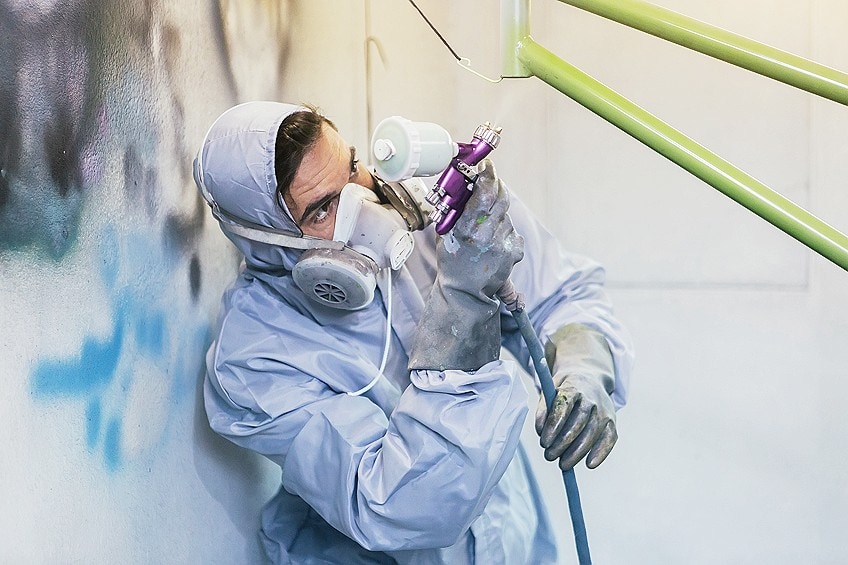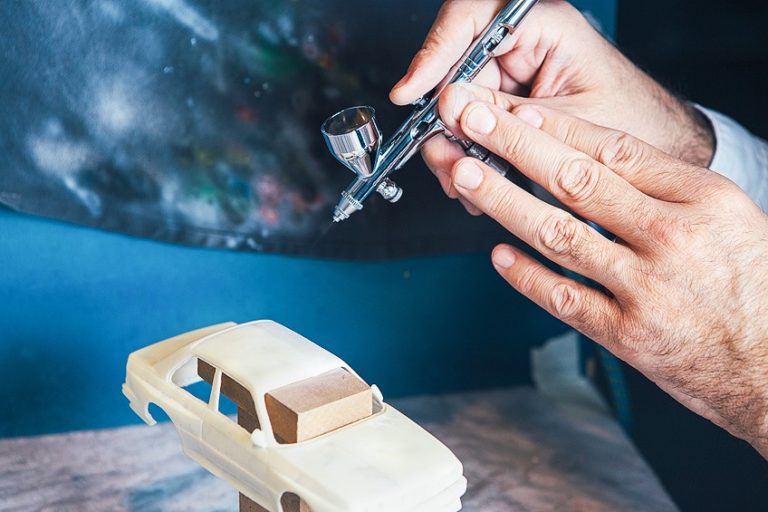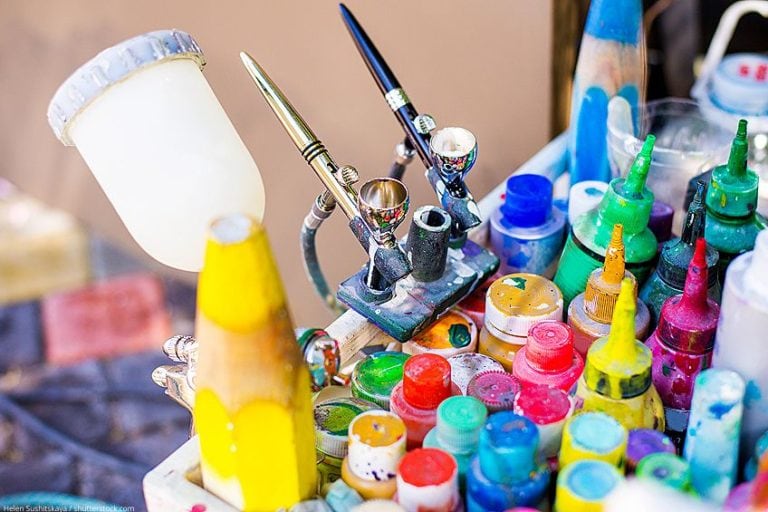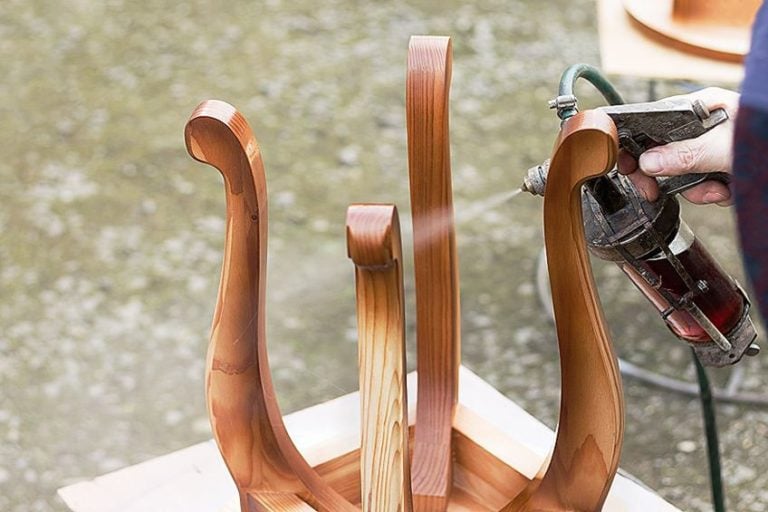Airbrush Mask – Should You Wear a Respirator for Airbrushing?
This post may contain affiliate links. We may earn a small commission from purchases made through them, at no additional cost to you.
Should you wish to tackle an airbrushing DIY project, the first question you should ask yourself is what safety precautions you should take to ensure that you can complete the task successfully whilst protecting yourself at the same time. One question that is asked frequently is that of whether or not it is necessary to utilize an airbrushing respirator or mask.
Table of Contents
Why You Need a Respirator When Airbrushing
You may ask why you need an airbrushing respirator when airbrushing, the answer to which can be explained when looking at two aspects: Overspray and fumes.
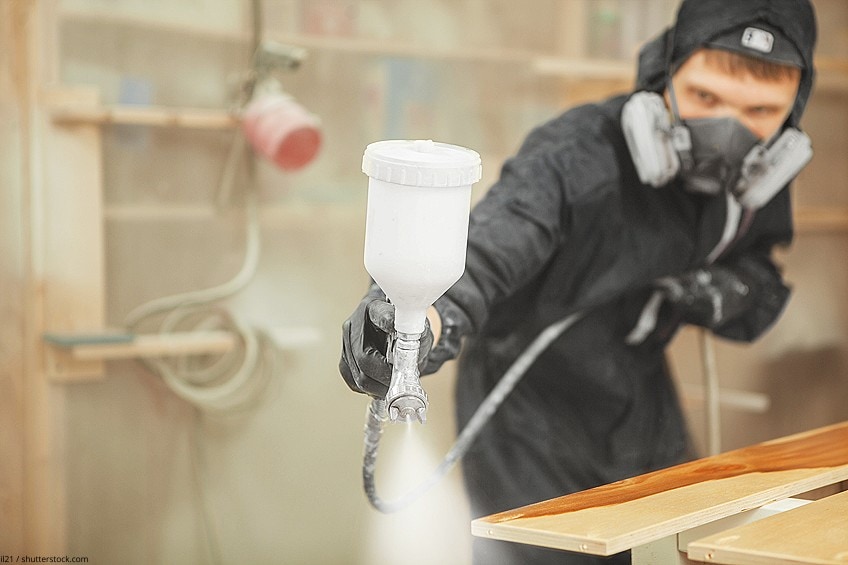
Overspray
Overspray is the result of the paint particles vaporizing, which once they become airborne, cause them to fall in areas outside your desired working space. This overspray is commonly identified as small paint splatter that falls on surfaces around the area you are working on.
An airbrush’s primary function is to vaporize the paint and spray out a significant volume of miniscule particles of paint. This assists you in covering a larger surface area than if one was simply to paint the area using a brush or roller. While most of the paint particles are hitting your designated work surface, many are landing away from the canvas, while others float in the air around you.
These tiny particles that are hanging in the atmosphere around you as you work can be inhaled and are extremely harmful to one’s health. Repercussions of inhaling such particles can lead to future damage to one’s lungs and your overall respiratory system, hence the need for an airbrushing respirator or an airbrushing mask.
Fumes
The second repercussion of airbrushing are the fumes that are given off by the paint or product you are using. One can argue that many of the airbrush products currently on the market tend to give off a variety of strong, toxic, and unpleasant fumes.
These fumes can be identified by their strong chemical smell.
Some paints, such as your more commonly used water-based acrylics, do not give off especially potent fumes, which means that you can simply wear a mask as opposed to a respirator. However, most other products such as solvent-based paints, enamels, and urethanes emit strong and often toxic fumes. The inhalation of such fumes, particularly over an extended period of time, will definitely led to significant damage of one’s respiratory system.
It is imperative for you to identify which paint type you will be utilizing for a given project, as this will determine whether it necessary for you to use an airbrushing respirator or simply an airbrushing mask.
Should I Wear a Mask or Respirator When Airbrushing?
It is necessary for you to wear some form of protection when airbrushing, whether it is an airbrushing or just a mask. Which of the two you should use is significantly impacted by the type of paint you are using. It is imperative that you wear either a respirator or a mask if you are atomizing paint through the use of an airbrushing system, as this will naturally result in overspray and fumes being given off. Wearing a mask or respirator will ensure that the paint particles and fumes do not enter your lungs.
As mentioned previously, certain paints are more harmful to you than others, depending the level of fumes given off. For example, you may argue that wearing an airbrush respirator when working with acrylic paint may seem a little over-the-top, as acrylic-based paints are in fact water-based and considered to be non-toxic (keep in mind that this is brand-dependant). However, all paints are harmful to you on some level, which is why you should always wear some kind of protection.
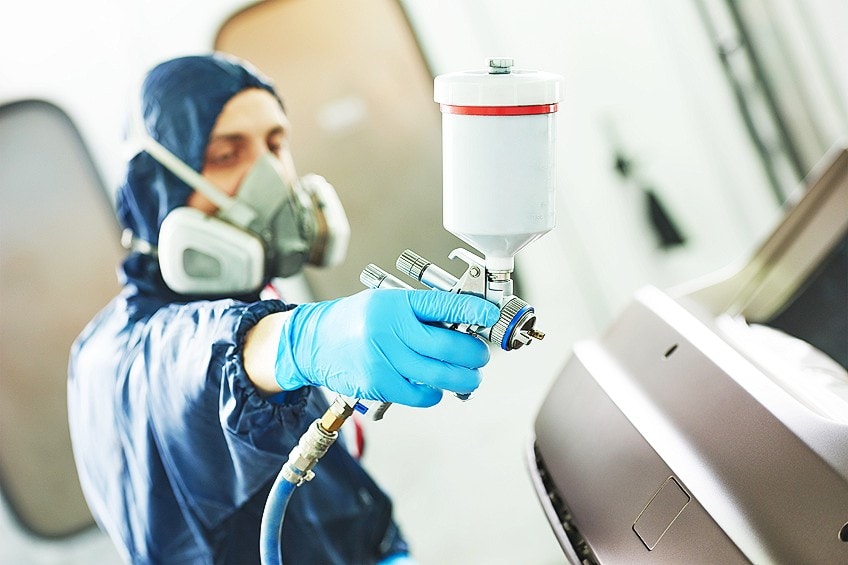
What is an Airbrushing Respirator?
What exactly is an airbrushing respirator? It is a mask that consists of two filters through which the air will flow until reaching your mouth. Each of the two filters performs their own role. When the air passes through the first filtering layer, it removes any solid particles within the air. The second layer decontaminates the air by filtering the fumes. The second filter is particularly useful, as it blocks out the pungent smell of the toxic fumes produced by airbrushing lacquers, enamels, or urethanes.
Respirator Types and Which to Use When Airbrushing
Just like different projects require different products, so do they require different protective gear. For example, if you are going to be airbrushing any form of solvent-based paints, we would recommend that you utilize a painter’s mask. Working with any solvent-based paints requires the highest level of protection, which is why respirator masks are so useful.
Alternatively, you can wear a normal mask when working with water-based paints, as these are non-toxic and do not produce as many fumes. You can also find respirator masks that have been designed specifically for water-based paints.
All forms of paint, whether they are toxic or non-toxic, produce fumes that should not be inhaled.
The crucial element to take into consideration when it comes to selecting the best respirator for your airbrushing project is to look for a product that not only filters the paint fumes, but also stops you from inhaling any paint particles. Over and above that, it is important to take the following aspects into consideration:
- Select a respirator that is clarified as “Spray Paint Specific” (or something along those lines) and is also NIOSH-approved.
- Look for a brand of respirator for airbrushing that is easily found and is manufactured by a reputable company. This is particularly important, as should you need to replace any parts of the respirator due to wear and tear, the parts will then be easy to come by.
- Ensure that the mask fits you properly. This means that when wearing the respirator, it should become sealed securely around your face, so as to prevent any leaks.
- When purchasing a respiratory mask, ensure that the filters can be purchased separately. This is because simply replacing the filter in the future will work out much cheaper than replacing the whole respirator.
- Before purchasing an airbrushing respirator, read up on available respirators on the market so as to get a clear understanding of the performance of each brand. Look at reviews to see how other people enjoyed using that particular brand.
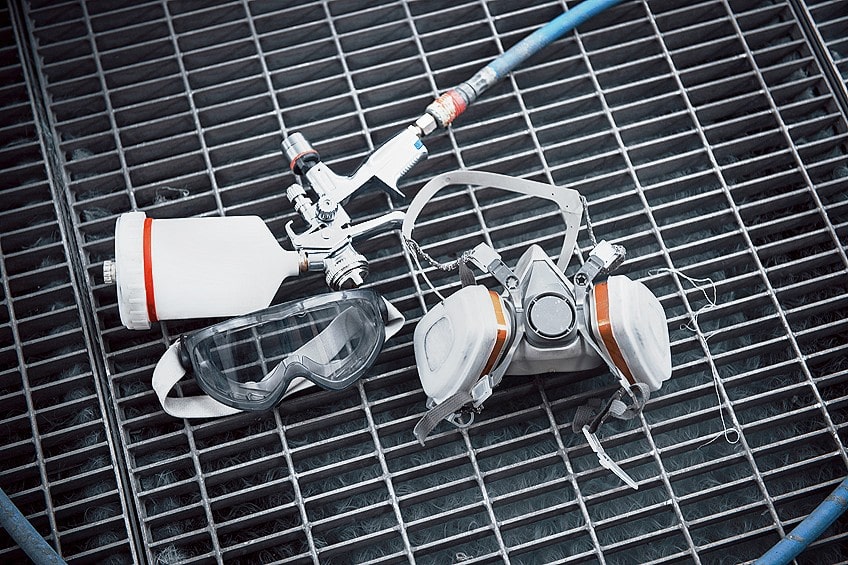
Using a Spray Booth to Prevent Overspray
One can use a spray booth to significantly decrease the amount of overspray that falls on surfaces around the area you are working on. It will also assist in reducing the volume of paint particles (overspray) in the air. It is definitely worth using a spray booth if you are going to be airbrushing near items and surfaces that you do not want to get paint on.
While a spray booth can prevent overspray, it should not act as a replacement for wearing a respirator or a mask. You should always invest in a good-quality respirator or, at the very least, wear a mask whilst using the spray booth for added protection.
It cannot be said enough that a good-quality respirator is an absolute must when doing any form of airbrush work. Should one ignore this warning, you will be exposing yourself to damaging toxins which can have a long-term impact on your health. Often, wearing a simple dust mask is not enough when it comes to your overall respiratory protection, which is why it is best to esnure that have a quality, well-fitted respirator to protect you from any harmful fumes and overspray.
Frequently Asked Questions
Is Airbrushing Indoors Safe?
Yes, but only if you have sufficient ventilation. The majority of airbrushing paints are acrylic-based, which means that they are water-based. While this type of paint is preferable over a solvent-based paint, ventilation is still required.
Is It Safe to Airbrush Outside Without a Mask?
While one would assume that airbrushing outside would ensure sufficient ventilation, there is still a fair volume of overspray that lingers in the air. Repeated exposure, even in small quantities, can have a long-term impact on your health. You should therefore always wear a respirator or mask.
Larissa Meyer is a 32-year-old mother from Michigan and creative spirit since childhood. Her passion for painting and drawing has led her to an education as an illustrator and a career as a freelance graphic designer. She has a Bachelor of Fine Arts in Illustration and a degree in Graphic Design. Larissa is a talented artist who is able to master a wide range of styles and techniques to bring her artistic vision to life. Her greatest passion is currently fluid painting and epoxy resin art. Larissa’s love for art and her knowledge and experience in illustration make her the perfect Creative Director for our fluid-painting.com team. She is the creative head of our team and shares her passion and knowledge with our community through articles and tutorials.
As a mother of a 2-year-old daughter, Larissa also understands the importance of fostering creativity in early childhood. She uses her experience and knowledge to help other parents inspire their children and develop their artistic skills as well.
Learn more about Larissa Meyer and about us.

